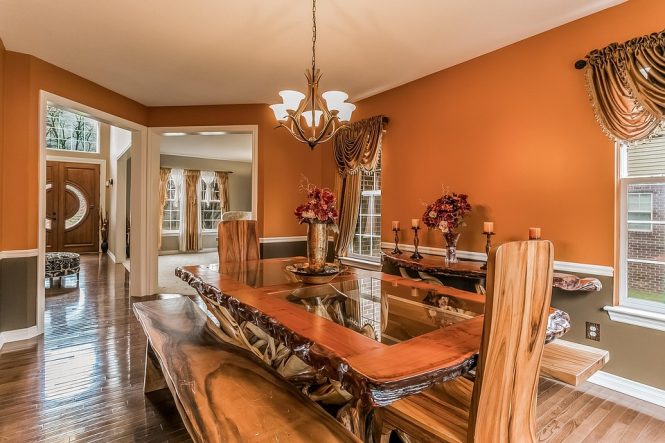
The Art of Mixing and Matching: Creating a Unique Dining Room Look
When it comes to designing a dining room, many of us struggle with creating a unique and harmonious space that reflects our personal style. One of the most effective ways to achieve this is by mastering the art of mixing and matching different elements, such as furniture, lighting, and decor. In this article, we’ll explore the secrets of mixing and matching to create a one-of-a-kind dining room look that’s both stylish and functional.
Start with a Neutral Base
Before you begin mixing and matching, it’s essential to establish a neutral base that will provide a foundation for your design. This can be achieved by choosing a neutral-colored wall, such as a soft gray, creamy white, or warm beige. A neutral base will allow you to introduce a variety of different elements without the space feeling overwhelming or chaotic.
Mixing Furniture Styles
One of the most exciting aspects of mixing and matching is combining different furniture styles to create a unique and eclectic look. For example, you might pair a modern dining table with vintage chairs, or combine a traditional sideboard with contemporary bar stools. The key is to balance different styles in a way that creates visual interest and harmony.
Some popular furniture style combinations include:
- Modern and mid-century modern: Pair a sleek, low-profile dining table with vintage mid-century modern chairs for a chic and sophisticated look.
- Rustic and industrial: Combine a reclaimed wood dining table with metal industrial-style chairs for a rugged and edgy look.
- Traditional and coastal: Mix a classic, ornate dining table with coastal-style chairs, such as wicker or rattan, for a light and airy feel.
Playing with Lighting
Lighting is another crucial element in creating a unique dining room look. By mixing and matching different lighting styles, you can add depth, texture, and visual interest to the space. Consider combining:
- Pendant lights and chandeliers: Hang a modern pendant light above the dining table, and pair it with a traditional chandelier for a dramatic and elegant look.
- Table lamps and floor lamps: Use table lamps to add warm, soft light to the space, and floor lamps to provide additional task lighting.
- Candles and string lights: Add ambiance and warmth with candles and string lights, which can be placed on the dining table, sideboard, or shelves.
Adding Decor and Texture
Finally, it’s time to add decor and texture to your dining room. This is where you can really get creative and express your personal style. Consider mixing and matching different:
- Patterns and textures: Combine smooth, glossy surfaces with rough, natural textures, such as wood, stone, or plants.
- Colors and materials: Mix different colors and materials, such as metal, glass, and wood, to add depth and visual interest.
- Decorative elements: Hang a statement piece of art above the dining table, and pair it with smaller, more subtle decorative elements, such as vases, baskets, or sculptures.
Tips and Tricks
To ensure that your mixed-and-matched dining room looks cohesive and stylish, keep the following tips and tricks in mind:
- Start with a unifying element, such as a rug or a piece of artwork, to tie the space together.
- Balance different styles and elements to avoid visual overload.
- Don’t be afraid to experiment and try out different combinations – it’s all part of the fun!
- Consider the 60-30-10 rule: 60% of the room should be a dominant style or color, 30% a secondary style or color, and 10% an accent style or color.
Conclusion
The art of mixing and matching is all about creating a unique and harmonious dining room look that reflects your personal style. By combining different furniture styles, lighting, decor, and textures, you can create a space that’s both stylish and functional. Remember to start with a neutral base, balance different elements, and don’t be afraid to experiment and try out new combinations. With a little creativity and flair, you can create a dining room that’s truly one-of-a-kind.